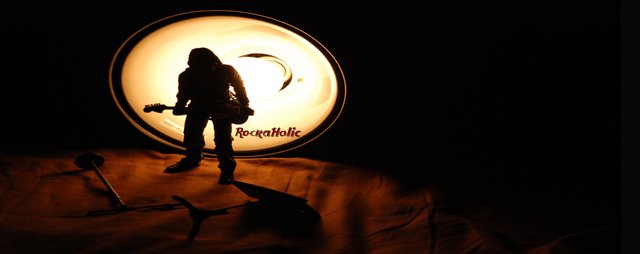Harajuku
Streets lined with elegant cafes, fashion boutiques and antique shops, this exquiste yet casual area of Tokyo is a must see.
Harajuku's growth started after the completion of the Meiji Shrine in 1920. The shrine was dedicated to the lives of the then recently deceased Emperor and Empress Meiji, who transformed Japan from a nation of isolation, and set it on it's way to becoming the major world force it is today. The construction of the beautiful Meiji shrine attracted many people from all over the country. But in WWII, Tokyo fell under intense American air raids that left Harajuku a desert of concrete rubble. Out of the rubble, in the late 1950's, Meiji shrine was rebuilt, and US occupation forces set up their housing in Yoyogi Park, in what was then known as Washington Heights, just behind the shrine. Soon the Americans left Washington Heights, and Japan got ready to host the '64 Olympics. Washington Heights was then used to accommodate Olympic athletes and renamed to Olympic Village, now Olympic Memorial Youth Center. The Olympic games drew tons of foreigners to the Harajuku area, and curious Japanese teenagers moved in to take in the new scenery. NHK, a television network, set up their studios nearby to observe up close the constantly changing Japanese youth and the new trends they started setting.
Harajuku made a name for itself in the '70's, when a fad style of brightly colored clothes named 'takenoko-zoku' was popularized and spread country wide out of a local boutique. Since then Harajuku has always attracted Japan's youth who in turn inspire Japan's newest fashion creations. Various 'zoku' styles have come and gone, but the tradition of original style creation can still be seen taking place all over this area.
Tokyo's Fashion Capital
The Ura-Harajuku area in particular contains some of the most popular shops for Japanese youth. It is located in the northeastern block of Meiji Dori and Omotesando. Early Harajuku youth's contact with the world started the area in this direction and it continues to move today at full speed. All day, everyday on Harajuku's Takeshita Dori walk Junior High School students on field trips from far away places in Japan, as well as people from everywhere on the globe. In Harajuku, wild and crazy subcultures are thought up and can be seen being lived out.
On Sunday, Harajuku attracted such a high population of all walks of youth and trendsetters that they would close down a main section of street to automotive traffic and turn it into a pedestrian road. It was in this atmosphere that the latest fashions, trends, and music modified or created by original Japanese were shown off to the world. Although in '97 they opened up the roads to automotive traffic, slightly limiting Sunday activities, there are still plenty of wild youth to be seen everyday from Yoyogi Park to the eastern reaches of the area. Sundays are still quite the colorful stampede they've always been.
Omotesando
Avenue of StyleWithin sight of Harajuku Station's south exit, the main exit, is an intersection where starts the famous east-west boulevard, Omotesando. The name Omotesando roughly means "shrine approach-front," as it used to be the main road of Harajuku, leading to the Meiji Shrine. Omotesando is now the connecting road, sandwiched between the two related but separate worlds of Aoyama to the southeast and Harajuku to the north. Omotesando is lined with shady old zelkovia trees, or 'keyaki'. The street is nicknamed 'Keyaki Dori' by the locals ('dori' means street). Japan's first western style elegant apartment complex "Dojunkai" has been standing here since the mid 1920's. Now largely covered with ivy, many art galleries and small shops occupy the apartments.
Omotesando is also where some of Japan's first European style cafes were founded. There is an interesting porcelain shop called Togasha on the north side of the street. Here, many Japanese come to learn how to paint porcelain European style. Even though much of the street and the whole area have a distinct European style, there are tons of antique stores and art galleries where you can find traditional items from all over Asia. Fuji-torii is one such place. You can find Japanese traditional works of art and antiques. They are offering Japanese pottery, traditional silkware, and graceful ornaments which are perfect for souvenirs. Omotesando's sidewalks are littered up and down with people vending their artwork.
How do We Get There?
There are several ways to get to the Harajuku area, the most obvious being JR. Yamanote Line's Harajuku Station, just two stops sout of Shinjuku. In addition to this are three more options: Chiyoda Subway Line's Meiji Jingu-mae Station; Omotesando Station that serves the Chiyoda, Hanzomon, and Ginza Lines; and Aoyama Itchome Station through which runs the Oedo, Hanzomon, and Ginza Lines.
Itu lah cerita serba sedikit pasal Harajuku. Terkenal diserata dunia bila sebut sahaja nama Harajuku. Gwen Stephanie pon sampai buat lagu laa pasal Harajuku nih..
Dan Harajuku memang wajib pergi bila melawat negara jepun iyer bro and sis??? Fashion yang pelik-pelik dari anak muda jepun boleh kita tengok sendiri kat sini. Especially Gothic and Cosplay. So pada kaki-kaki fashion boleh laa bertandang ke sini. Harajuku pula tak jauh dari Shibuya town. Berjalan kaki cuma mengambil masa dalam 15-20 mins jer. Dekat sesangat dari Shibuya...
Apa lagi?? Layanzz ler gambar-gambar dibawah nih…




















2 comments:
Wadduhhh rambut mat tu..giler a remos dia...lagi rock ni bro
remos elvis tu bro... last week dorang buat gathering utk fan elvis dan 70's kat yoyogi park...
tu yg ramai rambut ala-ala elvis...
tak boleh Blahhhh betul aku tgk rambut dorang tu... wakakakaka...
Post a Comment